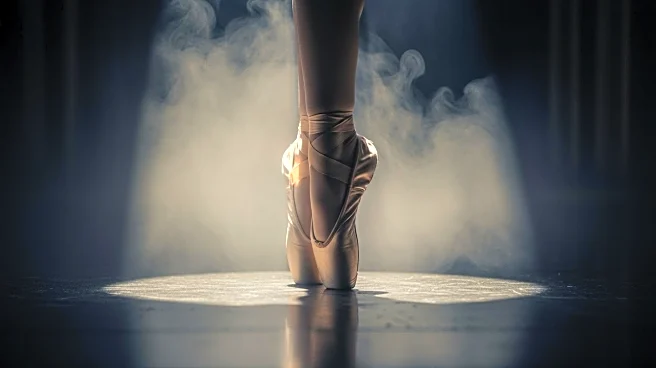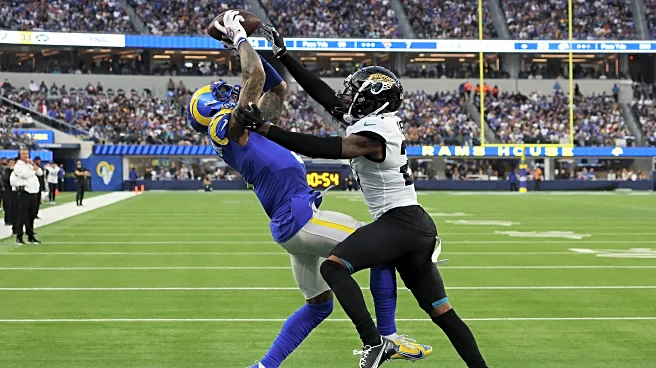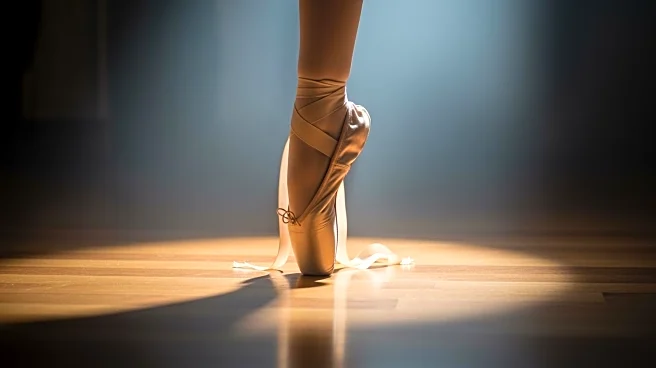What's Happening?
Misty Copeland, principal dancer at the American Ballet Theatre, and soloist Calvin Royal III are set to make history as the first African American pair to perform the lead roles in Kenneth MacMillan's 'Romeo and Juliet'. This production, which will be
staged this spring, is set to the music of Sergei Prokofiev, originally composed under challenging conditions in Soviet Russia during the 1930s. The ballet, first choreographed by MacMillan in 1965 at London's Royal Opera House, is known for its demanding technical and emotional requirements. Copeland, who has previously performed the role of Juliet, describes it as her favorite, emphasizing the unique experience of performing it live. Royal, who has long aspired to play Romeo, expresses excitement about the opportunity to perform alongside Copeland, marking a significant moment in their careers.
Why It's Important?
This performance is significant as it represents a milestone in the representation of African American artists in classical ballet, a field historically dominated by white performers. Copeland and Royal's casting in these iconic roles challenges traditional norms and highlights the increasing diversity within the ballet community. Their performance is expected to inspire a new generation of dancers and audiences, promoting inclusivity and broadening the appeal of ballet. The event also underscores the evolving landscape of the arts, where talent and artistry are increasingly recognized over racial and cultural barriers.
What's Next?
As the performance date approaches, anticipation builds within the ballet community and among audiences eager to witness this historic event. The American Ballet Theatre is likely to receive significant attention, potentially leading to increased ticket sales and media coverage. The success of this production could pave the way for more diverse casting in future ballet performances, encouraging other companies to follow suit. Additionally, Copeland and Royal's performance may influence discussions on diversity and representation in the arts, prompting further initiatives to support minority artists.
















